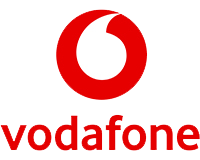Automatically bring devices under management at scale.
Configure device settings and functions over the air.
Obtain detailed device reports and remotely troubleshoot.
Revoke access to resources, data, and management.
Mobile Device Manager Plus is an enterprise mobility management solution that takes the load off the admin's shoulders by automating device enrollment with zero-touch and self-enrollment methods. The enrolled devices are provisioned with the required security policies, apps, and resources based on users' roles in the organization.
Automate the configuration of Wi-Fi, VPN, emails, passcodes, apps, and other settings. Minimize downtime for mission-critical devices with remote control. Receive alerts when important events, like low battery level, occur on these devices. In addition to alerts, schedule tailored reports to be sent to your inbox for gaining deep insights into devices. Reprovision devices for other employees or retire them based on requirements.
Configure app settings and permissions prior to deployment.
Provision store and in-house apps without user intervention.
Enforce policies and restrictions that safeguard app data.
Run apps on stipulated versions.
Uninstall apps on demand.
Manage apps throughout their life cycles, starting with preconfiguring app settings and permissions to help users adopt apps with minimal to zero setup. Deploy these configured apps to devices silently or to self-service portals that are directory-group-specific and department-specific to ensure easy access for the right users.
Control the versions of custom apps present on devices based on departments while setting automatic update policies for store apps. Keep your network safe from malware by blocking apps that have malicious intent and preventing the installation of apps from untrustworthy sources.
Enforce restrictions to keep the data stored on devices safe.
Implement DLP policies that create a virtual fence around corporate data.
Control and encrypt network traffic from devices.
Enforce the encryption of devices and SD cards and set passcode and biometric login policies to keep devices safe. Complement this by patching zero-day OS vulnerabilities instantly with exhaustive OS update policies. To ensure compliance, apply geofencing policies and take corrective action whenever a device enters or exits a fence.
Keep data in use secure by regulating copy and paste, screenshots, third-party cloud backups, USB and network data sharing, and sharing through unapproved apps. Ensure the safety of data in transit by configuring and controlling network parameters like Wi-Fi, Bluetooth, NFC, VPN, APN, and proxy. Distribute trust and client certificates at scale by leveraging our integrations with certificate authority servers.
Provision devices with business-essential content.
Provide proactive security against data breaches.
Update content in bulk on devices with just a few clicks.
Block content access on noncompliant devices.
Distribute corporate content to managed devices with DLP policies to curb sharing. These policies can also be applied to secure corporate app data on managed devices as well as unmanaged devices. Go the extra mile and proactively block any unauthorized devices from accessing corporate emails and data.
Configure email accounts at scale and restrict attachment access to managed apps that have DLP policies configured. Integrate with Microsoft 365, Google Workspace, and Zoho Workplace to configure email and work apps, enforce conditional access, and set DLP policies, even when the devices are not managed.
Onboard personal devices as easily as corporate ones with self-enrollment.
Isolate everything work-related by encrypting it inside a container and apply DLP policies.
Zero access to personal da ta gives users maximum privacy.
Manage just the corporate apps, even when devices are not managed.








We have been using Mobile Device Manager Plus for over a year now, and it has assisted us in staying compliant with our organization's security and compliance policies. We are able to safeguard our customer data, track our devices, and implement policies over the air.
Syed Ahmad Rasool Sr. manager of technology security, Vodafone
Mobile Device Manager Plus is a powerful safeguard against the threat of corporate content coming into the wrong hands. This robust solution enables us to centralize all mobile devices on the same console as a web-portal which is segmented by countries. The access for local IT teams in each country is restricted to the mobile devices in their respective country, ensuring better security.
Abdoul Karim Barry Systems engineer, Microcred Group